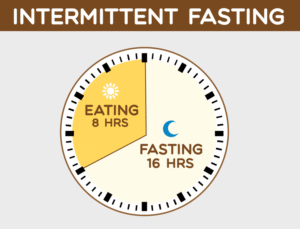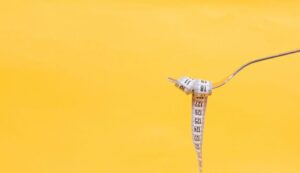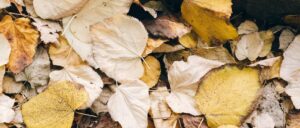The Barriers
I encountered naturopathy early in my childhood, so took it for granted that people around me know would know of it as well. I have been wrong.
Some thing of it as grandma’s home remedies, others equate it with ‘health fads’ like ice baths. Others think, going to a naturopah is like going to a dietician.
But very few understand that it is a complete standalone health/healing system, just like Ayurveda and homeopathy are.
Even those who understand it as a complete healing system, dismiss it. They reason that it is an ancient system, not suitable for the fast paced moden life. Others stay away citing it might some religious connotation when they see naturopathy practicsed alongside traditional yoga( jal neti, kunja kriyas) and inside ashrams.
And then there is the issue of visibilty. Ayurveda is positioned as top of the ladder in India and hence receives a stronger push even from the government. Plus, it has a larger commercial value. A lot of facilities today offer combined treatments in Ayurveda and Naturopathy: Kayakalp in Palampur, Balaji Nirodham in Sonipat, and several more across the country. What do you think you are likely to remember more: the treatments that cost you more, needed more preparation and execution or the simpler & cheaper ones, which you can even do at home?
Lastly the desire to achieve quick results and symptomatic relief, has led to the fad of Integration. I believe it takes years of continuous learning and practice to fully comprehend the nuances of one healing system and similarly takes time to see fully its effects when applied to the body . Any attempt to mix another healing system, often produces only symptomatic relief and temporary results. Integration is a tool best in the hands of the very experienced.
The Fundamentals of Naturopathy
1. Toxic matter & detox
Toxins or toxic matter is produced in our bodies constantly as natural by-product of metabolism, digestion and breathing. Think dead red & white blood cells, urea & uric acid after proteins digestion. Toxics are also produced when the air we breathe is polluted, leading to more carbon dioxide in the body. The body constantly tries to detoxify, i.e. remove these toxins through the 4 organs of elimination: colon, kidneys, skin and lungs. In woman, their menstrual cycle is the 5th passage of elimination. As long as these organs are healthy, or the amount of toxins are what they can optimally eliminate, the body functions well. But if there is more accumulation than elimination, the body starts getting more toxic.
This accumulation is the genesis of all disease in naturopathy and always starts with the GUT. Hence detoxification of the GUT, making the organs of eliminations optimal and stopping additional toxins form key principles of any naturopathy treatment
2. Unity of disease
In pure naturopathy, there is very little focus on specialised diagnosis, because it believes that all disease arises from the accumulation of toxic matter in the body. (Allopathy tests, are however used as diagnostics.) Naturopathy merely classifies the extent of this accumulation.
2.1 Acute Disease: Runny nose, vomiting, diarrhoea, fever are seen as the body’s attempt at self-detoxification or throwing out the over-accumulated toxins. These symptoms are called acute diseases, since they come on rather quickly and can be aggressive in nature. A naturopath allows for the body to eliminate and supports the organs of elimination during this phase. Naturopathy treatments such as Kunjal, Enemas, Sun baths are especially useful during this time. Food is kept at minimal and mostly in fluid form.
Read below why ‘Fever’ is considered a process of elimination in naturopathy
2.2 Chronic Disease: Unfortunately, we have all now become accustomed to quickly suppress the symptoms above by taking pills. Habitual and continuous suppression of acute diseases results in hardening of these accumulation, which then starts settling in and around organs. Over time, it moves from organs to systems: the circulatory, digestive, neurological.
2.3 Destructive Disease: Where the disease starts attacking, eating or destroying parts of one’s own body. In modern parlance: all auto-immune, cancer, every form of tuberculosis, would fall in this bucket.
3. Theory of 5 elements
Naturopathy or nature cure or the science of hygiene is based on the theory of the 5 elements: Space or ether, Air, Fire, Water and Earth. Every living thing in nature (human beings, plants, animals) are a combination of elements. Humans have all 5, birds have 3. Naturopathy believes that since our body is made of these 5 elements, a dis-balance in any of these is what disturbs our equilibrium and prolonged disturbances become diseases. To prevent or cure disease therefore, equilibrium must be restored and that can be done by using these very elements as treatment modalities.
Space: Fasting, sleeping under and staring at the sky.
Air: Ealy morning walks, pranayama/breathing practices, ventilations in living areas.
Fire: Sun related treatment. Chromo/colour therapy: sun charged oil or water in different coloured bottles, green leaf sun baths
Water: All baths; hydro baths (spinal, Steam, foot, hip)
Earth: Mud packs, pits and baths. Most treatment through Food is considered part of earth elements.
4. Vital energy
What the Chinese call ‘chi’, Yoga calls ‘prana’, Egyptian called ‘Ka’, the naturopaths call vital energy. It’s the body’s innate energy or life force that is constantly at work. An allopath’s view of bodily energy is like a ‘coal engine’: you keep adding coal (food) and you will get heat and energy. The naturopath views the body more like an electric engine. The current or power that enables bodily functions (especially the autonomic system) flows along the nerves like some kind of electricity. The more blocks this electricity will encounter in its path (toxic matter) the lower its output or lower the vitality.
Hence, a naturopath’s job is to remove the blocks in the way of this vital energy and increase the power of this energy. This vital energy acts like the ‘doctor within’. When adequately restored, it can heal the body from within.
Fasting and cold water applications is what restores this energy the most.
5. Food is medicine
It was Hippocrates, the father of modern medicine, who declared “let food be thy medicine, and medicine be thy food.” Naturopathy is built on this principle. Long before there were nutritionist or dieticians, there were naturopaths using food to heal the human body.
“Food is what can be eaten in large quantities, fills the stomach, i.e. alleviates hunger”
In our practice at www.yoururbannaturopath.com , large quantities of plant-based raw food: fruits, vegetables, juices are extensively used in the initial weeks. This is followed by lightly steamed vegetable and sprouts. Lastly and if needed, grains or nuts get used. These are soaked for prolonged periods and mildly cooked. All form of cooking is oil-free and salt free.
6. Completely drugless
This is also how naturopathy differs from Ayurveda which also recommends some dietary changes, but they treat through medicines (though of a herbal origins and not synthetic) At the Urban Naturopath, we use NO supplements or herbal medicines, retaining the truly ‘drugless’ tenet of pure naturopathy.
7. Lifestyle focus
The small, regular habits that form a part of our daily routines have a significant impact on our health. A naturopath is more a guide or a coach gently egging you on to make those small modifications or build those small habits that can have lasting impact. Some examples include:
- Drinking adequate within 30 minutes of waking up
- Having a regular yoga or walk or exercise routine
- Finishing eating 2-3 hrs before sleep
- Sleeping between 9:30-11PM
In India currently, its takes 5.5 years to get a bachelor’s degree in allopathy (MBBS), 5.5 years to get a bachelor’s degree in Ayurveda(BAMS) and 5.5 years to get a bachelor’s degree in Naturopathy (BNYS)! The other path to Naturopathy training is through Diplomas which can range from 1 to 3.5 years.
You can read about my journey into naturopathy here






3 thoughts on “Understanding Naturopathy: Principles and Practices”
So beautifully explained Rupinder. We should be incorporating Naturopathy everyday, almost every moment of our lives as it is so innately connected to us, but we are not aware about it. Love that your writing style is full of clarity n of explaining things scientifically in a simple manner. Thank you, it was very insightful.
Thanks Divi! So glad that you see the connection with everyday life.
Pingback: Listening to COVID - Urban Naturopath